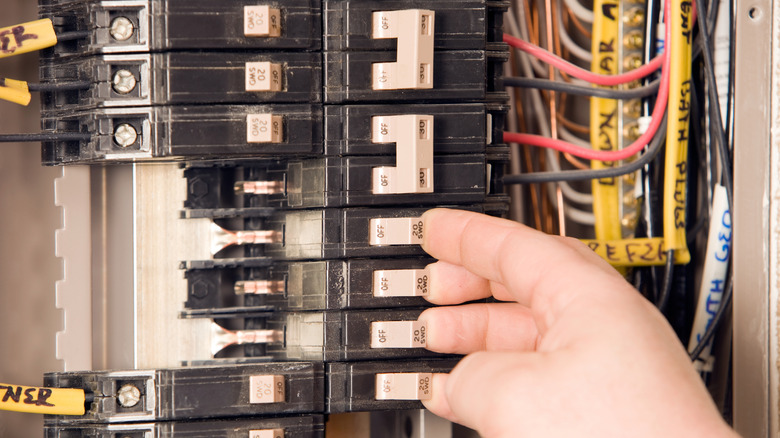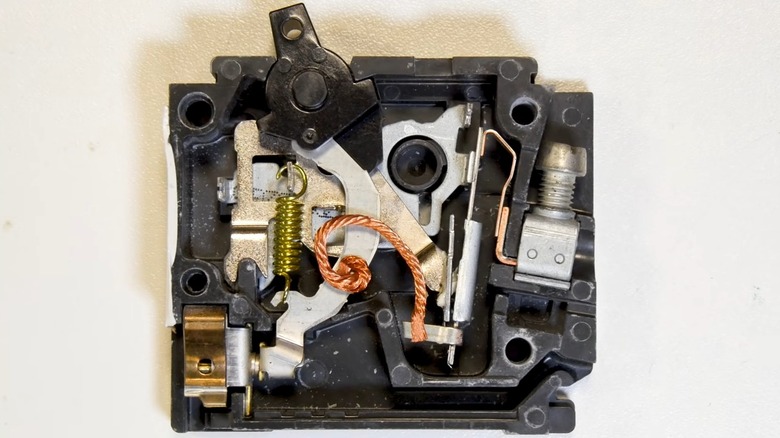How Much Does It Cost To Install A New Circuit Breaker?
We may receive a commission on purchases made from links.
Without circuit breakers, the electricity running through your walls could damage wiring and cause fires. There are several reasons why you might need new circuit breakers, such as a home renovation or needing to power additional appliances. Sometimes, it might also be necessary to replace circuit breakers if they're malfunctioning, are several decades old, or feel hot to the touch, among other concerns. You may also consider upgrading other areas of your electrical system with one of several energy-saving devices that could help cut down your power bill.
But how much is a new circuit breaker going to cost you? A new installation in general can run anywhere from $100 up to $4,000, depending on the scale of the job. This doesn't exactly narrow it down much, though. Unfortunately, the cost largely depends on several factors. For example, the price of a single-pole (120-volt) 15-amp breaker may only cost $5 – though, Amazon's highest rated 15-amp breaker lists for $12. However, most homes need larger breakers for more demanding appliances like washing machines and refrigerators. This requires a much more robust double-pole (240-volt) 200-amp breaker, which could run you around $250.
If the installation requires a more costly ground-fault circuit interrupter (GFCI) outlet, typically found in areas like the bathroom and kitchen, the additional cost will be in the neighborhood of $150. Beyond the cost of the parts, you need to consider labor, and this will vary based on how far apart your outlet and circuit breaker are, how challenging it is to gain access to the wiring, and even residential location. On average, the labor for installation will be between $95 and $350, while electrical permits and inspection can range from $50 up to $350. Each job's price can vary based on needs and complexity, though.
How do circuit breakers work?
Circuit breakers are one of the components inside the main electrical service panel inside your home — some people refer to it as a breaker box. The purpose of a circuit breaker is to shut off electrical current that has reached unsafe levels. A breaker can trip, which is the mechanism physically separating the connection between internal contact points, stopping the flow of power. More advanced circuit breakers utilize semiconductor chips for faster response times. These solid-state based designs can interrupt the circuit much faster because they have no moving parts. However, these technologies are far more expensive and mostly used in industrial applications rather than single-family homes.
Each residential circuit powers many different outlets in your house. You've likely tripped a breaker in your home before after plugging in two high-power draw devices on the same circuit — for example, a hair dryer and vacuum cleaner. Many household devices are power-hungry, and you'd be surprised how many watts are used on average, especially by devices such as modern smart TVs. Though, you can purchase a watt power meter monitor to help ensure you're not overworking your electrical system.
If you're lucky, your electrical panel clearly indicates which circuit breakers control what rooms. However, due to renovations or changes by the previous homeowners, you could have a confusing mislabeled mess on your hands. Fortunately, among the handy tools for DIY electrical projects, a highly-rated circuit breaker finder can be especially useful, as it identifies which breaker supplies which outlets.

